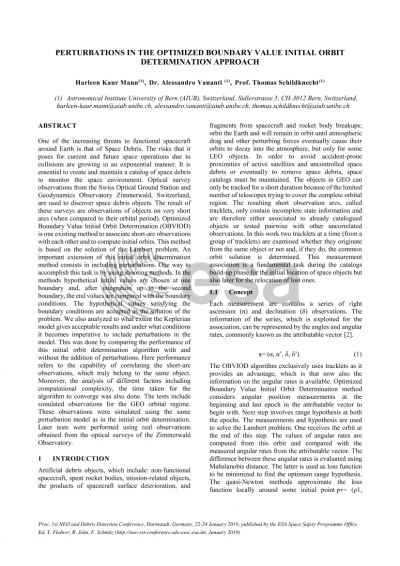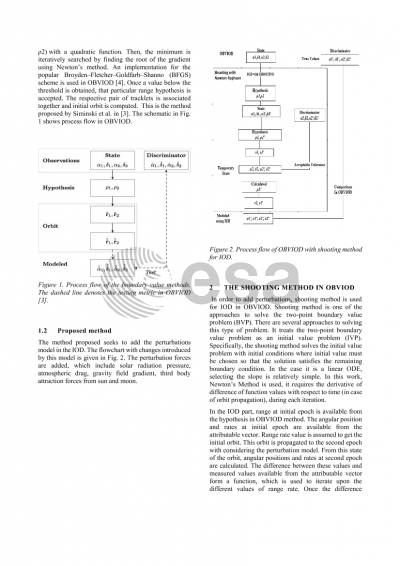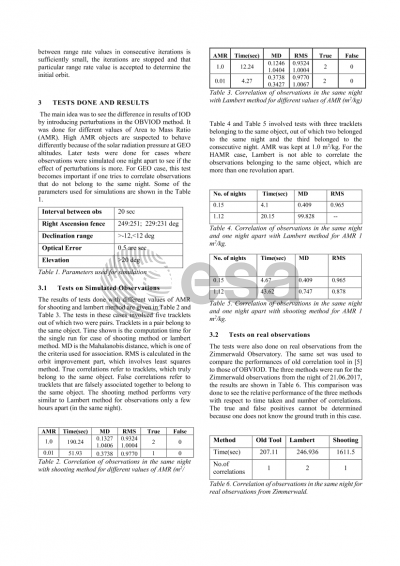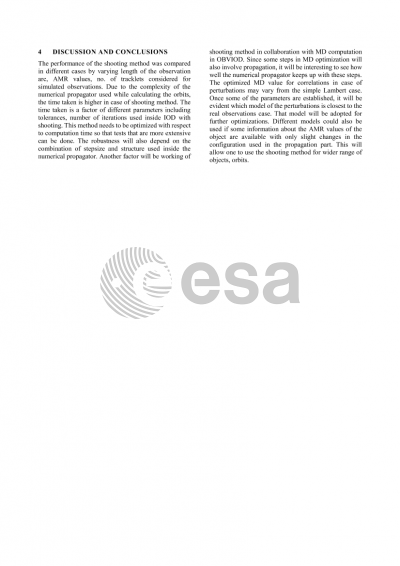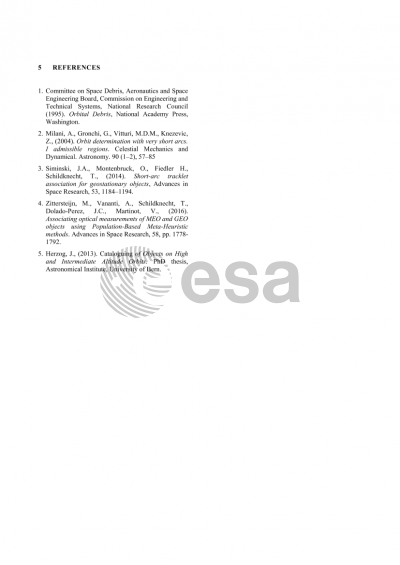Document details
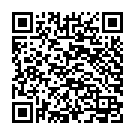
Abstract
One of the increasing threats to functional spacecraft around Earth is that of Space Debris. The risks that it poses for current and future space operations due to collisions are growing in an exponential manner. It is essential to create and maintain a catalog of space debris to monitor the space environment. Optical survey observations from the Swiss Optical Ground Station and Geodynamics Observatory Zimmerwald, Switzerland, are used to discover space debris objects. The result of these surveys are observations of objects on very short arcs(when compared to their orbital period). Optimized Boundary Value Initial Orbit Determination (OBVIOD) is one existing method to associate short-arc observations with each other and to compute initial orbits. This method is based on the solution of the Lambert problem. An important extension of this initial orbit determination method consists in including perturbations. One way to accomplish this task is by using shooting methods. In these methods hypothetical initial values are chosen at one boundary and, after integration up to the second boundary, the end values are compared with the boundary conditions. The hypothetical values satisfying the boundary conditions are accepted as the solution of the problem. We also analyzed to what extent the Keplerian model gives acceptable results and under what conditions it becomes imperative to include perturbations in the model. This was done by comparing the performance of this initial orbit determination algorithm with and without the addition of perturbations. Here performance refers to the capability of correlating the short-arc observations which truly belong to the same object. Moreover, the analysis of different factors including computational complexity, the time taken for the algorithm to converge was also done. The tests include simulated observations for the GEO orbital regime. These observations were simulated using the same perturbation model as in the initial orbit determination. Later tests were performed using real observations obtained from the optical surveys of the Zimmerwald Observatory.
Preview
